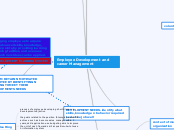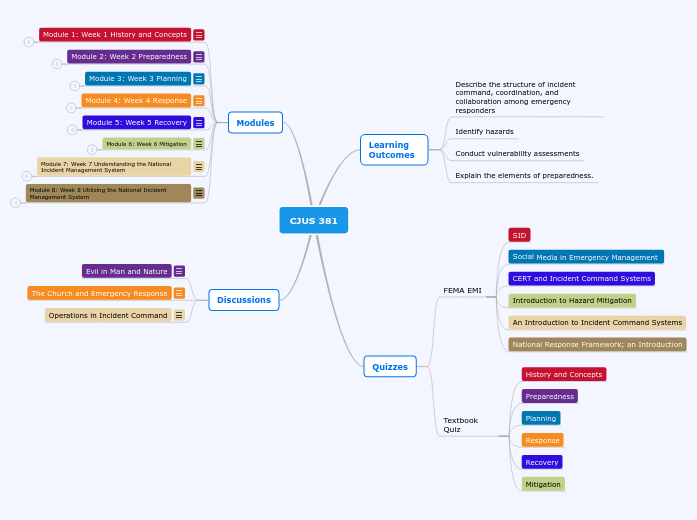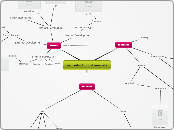steps in development planning process
goal setting
thee goals will be discus with manager n written in development plan.Development plan focuses more to development needs that are relavant to organization strategic objective
the goals related to the position tht employee want to achieve such as become sales manager within 3 years,skill application-use budgeting skis to improve the unit of cash flow and skill acqusition=hw to touse hr information system
process of employee developing short n long run development objective
action plan
written strategy(steps taken to achieve the goal)tht employee determine how they wil achieve their short and long term career goals
ex: training, additional asessment, finding a coach n obtaining new job experience
Reality check
performance based on employee job performance(6 month or 1 year), related with pay such as promotion and salary increment
using 360 degree feed back :employee self evaluation of their behavior,manger reports or customer evaluation( forms or points)
provided by manger based on performance appraisal
info tht employee receive ab hw the company evaluates their skills n knowledge n where they fit into company 's plan(promotion)
self assessment
use of info by employee to determine
their career interest, value attitudes n behavior
SYSTEM RETAIN N MOTIVATED EMPLOYEE BY IDENTIFYING N HELPING TO MEET THEIR DEVELOPMENTS NEEDS
DEVELOPMENT PLANNING SYSTEM
psychological test
self directed search-identify tht the employee cn work in different environment or no such as landscaping, sales
strong Campbell interest inventory-help to identify their occupational n job interest
myers-briggs type indicator -type of personality test
career
psychological success
psychological success is more under employee control bt traditional career was controlled by availability of positions in the company
Traditional tools wait for things to happen—an appropriate job to appear online, a response to a resume, a phone call about an applicationic
u cn achieve what u want to achive
ex:mariam working as bank officer, c resign in age 55,then se interest in farming thn she studied onlineand visit local farm then she open her own farming
protean career
employee take a major responsibility for managing their career
ex:siti take break from her current job to work at management deparment ..it could improve her managerial skill n it also help to evaluate if she like managerial work more thn her current job
Subtopic
with the goal of psychological sucess in 1 work&
context of mobility with in an organization
ex:staf engineer-seniour engineer thn to manager
training
the employee must attend
helping employee performances in their current job
ex: old machine need 5 steps to produce 1 product,new machine need 3 steps only
ex :-supervisor to manager
development
voluntary participation
helps employees prepare for changes in their current jobs that may result frm new technology,work design,new customers or new product markets
focus on future-oriented
prepare them for other position in the company & increase their ability to move into jobs that may nt yt exist
Encouraging employees to acquire new or advanced skills, knowledge, and view points, by providing learning and training facilities, and avenues where such new ideas can be applied.
Employee Development and career Management
DEVELOPMENT NEEDS-identify what skills ,knowledge n behavior required to do the job well
How to Match Job Experience vs Employees Needs & Goals
Successful planning
Onboarding process
Developing managers with dysfunctional behaviours
Issues in succession planning
Assessing & making development plan using 9 Box Grid
Process of developing a successful plan
Identifying,evaluating, developing and tracking high potential employees
Interpersonal Relationship
Coaching
peer/manager motivates, develop skills & provide reinforcement & feedback
Mentoring
Phychosocial support
Role model
career support
coaching,sponsorship
Group mentoring programs
The Relationship among Development Training and careers
Approaches to Employee Development
Job Experiences
Enlargement of current Job experience
Externship
Downward move
Temporary assignment projects/volunteer work
Transfer/Lateral move/Job rotation
Promotion
Assessment
Performance Appraisal & 360 degree feedback System
360-degree feedback systems
Effective 360-degree feedback system
confronting problems & team oriented
Straight-forward & steadfast
Compassion & sensitive
Leading subordinates
Building & mending relationships
Ability to face obstacles
Resourceful
Potential limitation
companies' failure to provide ways that managers can act on he feedback provided
the need to have facilitator to help interpret the results
managers seeking to identify & punish raters who provide negative information
Time demand placed on the raters to complete the evaluations
Benefits
formalizing communication about behaviours & skill ratings
allowing employees to compare own evaluation with others
Collecting multiple perspectives of manager's performance
employees' behaviour/skills are evaluated not only by subordinates but by peers, customers & their bosse
Upward feedback
Appraissal that involves collecting subordinates' evaluation of managerial behaviour & skills
Assessment Center
In-basket simulation
Interview/Role play
Leaderless group discussion
Multiple raters/evaluators evaluates employees' assessment performance
employees' administrative & interpersonal skills
Personality test & Inventories
Ability to get along with people
Assertiveness
Emotional Stability
Conscientiousness/Dependability
Measure openness to new experiences
Collecting information & providing feedback to employees about their behaviour, communication style/skills
Formal Education
Formal Education Program
Tuition Reimbursement
Practice of reimbursing employees' costs for college or university courses and degree programs
Increase employee retention rates & readiness for promotion
blended-learning
online learning
Face-to-face classroom instruction
Executive Education
Blended-learning approach
Team Projects
Work on line with assignments
Between sessions
Face-to-face instructions
Executive MBA Program
In-house development program
Can get senior-level management involved
Short courses
ex: consultants & university programs
Program outcome easily evaluated using company metrics
Program tied directly to business need









